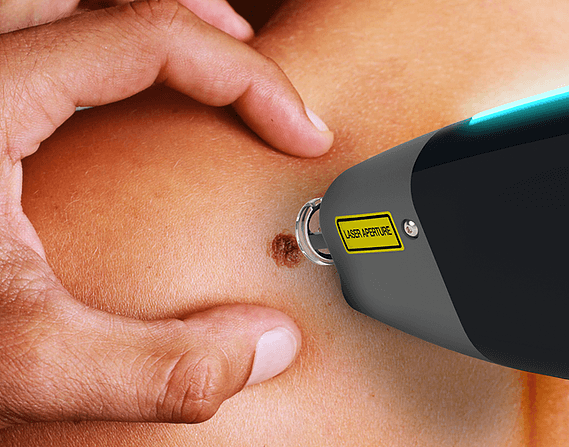In order to maintain healthy bones, strengthen the immune system, and maintain general wellbeing, vitamin D is a crucial nutrient. Since it causes the skin to produce it, sunlight continues to be the major source of this essential vitamin. However, too much sun exposure may cause sunburn and raise your chance of developing skin cancer. How then can we consume the appropriate amount of vitamin D each day without endangering the health of our skin? This post will look at 25 effective and secure ways to get natural vitamin D while preserving our skin.
The Safest Method for Natural Vitamin D Intake Without Excessive Skin Exposure
We will now look at more methods that go beyond merely depending on sun exposure to acquire natural Vitamin D.
Foods High in Vitamin D: Diet is one of the easiest methods to increase your vitamin D levels. Several foods, including egg yolks, fortified dairy products, and fatty fish like salmon, mackerel, and sardines, are great providers of this vitamin. Your vitamin D intake may be considerably increased by including these foods into your regular meals.
Supplements: Supplements may be a trustworthy choice if acquiring enough Vitamin D from diet or sunshine proves to be difficult. A variety of vitamin D supplements are offered, including vitamin D2 and vitamin D3. Before beginning any supplement programme, it is essential to speak with a healthcare professional to establish the proper dose for your requirements.
UV Lights Indoors: UVB rays are emitted by indoor UV lamps, and the skin needs these rays to make vitamin D. For those who live in places with little access to sunshine, these lights might be a great option, especially in the winter.
Mushrooms: Mushrooms and human skin both have the ability to synthesise Vitamin D in response to sunshine. It is possible to ingest varieties like shiitake or maitake, which are abundant in vitamin D and serve as a natural supply of this important element.
Sun Protection Management: While getting some sun exposure is necessary, care should also be used. To guarantee Vitamin D production while lowering the danger of sunburn, choose brief periods of sun exposure during off-peak hours, such as early mornings or late nights.
Choosing the Correct Sunscreen: Sunscreen is crucial for protecting your skin from damaging UV rays, but it may also prevent your body from naturally producing vitamin D. After some early sun exposure, think about using sunscreen to maintain a balance.
Protective Garments: Wear long sleeve shirts, caps, and sunglasses to protect your skin from harsh sunlight, particularly while engaging in lengthy outdoor activities where you can still get a nice dose of vitamin D.
Spectrum-Wide Sunscreens: Select sunscreens that provide broad-spectrum UVA and UVB radiation protection. To successfully protect your skin, look for sunscreen with a Sun Protection Factor (SPF) of 30 or greater.
Water, water water!: It’s crucial to stay well hydrated to maintain healthy skin and lower your chances of becoming sunburnt.
Find Shade: When feasible, seek cover during the sun’s peak hours, which are normally between 10 am and 4 pm, to reduce your exposure to UV radiation.
Consider the UV Index: Plan your outdoor activities appropriately by paying attention to the UV index in your location to determine the UV radiation strength.
Keep an eye on your vitamin D intake: Consult a doctor often to check your vitamin D levels and decide if you need increase your sun exposure or take supplements. Also, get your skin checked at least once a year.
A Secure Sunbath: If you decide to sunbake, go with caution. Increase your exposure to the sun gradually and steer clear of lengthy exposure.
Indoor Exercise: Choose indoor workouts on very bright days to avoid lengthy sun exposure and keep active.
Natural Alternatives to Sunscreen: In addition to boosting the formation of vitamin D, certain natural oils with low SPF, including coconut oil, may provide some sun protection.
Eat fortified foods: Vitamin D is added to many commonplace foods, including cereals and orange juice. Including these items in your diet may increase your intake of vitamin D.
Desserts Rich in Vitamin D: To indulge your sweet taste while improving nutritional intake, consume fortified chocolates and other treats that are rich in vitamin D.
Skincare Is Crucial: Your skin’s capacity to synthesise vitamin D may be maximised by good skincare habits.
Skip the sunbeds: It is advisable to stay away from tanning beds since they release harmful UV rays that may cause skin damage and cancer.
Smoothies Rich in Vitamin D: For a pleasant and healthy treat, add yoghurt, almond milk, and fresh fruit to your smoothies as sources of vitamin D.
Continue to learn: To make wise decisions regarding sun exposure and eating habits, keep yourself informed on Vitamin D research and recommendations.
Balancing Shade and Sun: You may enjoy the outdoors without endangering your skin if you strike the correct balance between soaking up the sun and looking for cover.
Cosmetics with vitamin D: If you want additional skincare advantages, look for cosmetics containing vitamin D.

Frequently Asked Questions About Vitamin D Intake
Can I get enough vitamin D from my food alone?
Even while certain foods contain vitamin D, it may be difficult for some people to receive enough by diet alone, particularly if they have particular dietary demands. To achieve daily needs, it can be required to get some sun or take supplements.
Is UV light therapy inside safe?
If used properly and sparingly, according to the manufacturer’s guidelines and avoiding overexposure, indoor UV light therapy may be safe.
A window may let in sunshine, but does that offer vitamin D?
Unfortunately, exposure via a window won’t be enough since glass blocks the UVB rays needed for vitamin D synthesis.
How much sunlight do I need to get enough vitamin D?
Variables including skin type, location, and time of day affect how much vitamin D is produced at its best. Most individuals only require 10 to 30 minutes of sun exposure a few times each week to satisfy their needs.
Can I use sunscreen and still get enough vitamin D?
Sunscreen is necessary for skin protection, however it could prevent the formation of vitamin D. Think about combining sun exposure with the usage of sunscreen.
Are there hazards involved with consuming too much vitamin D?
Too much vitamin D may be harmful and result in symptoms including weakness, nausea, and vomiting. Always adhere to dose recommendations and ask a medical professional for guidance.
The importance of getting enough vitamin D is critical for general health, but so is guarding against too much sun exposure. You may maintain appropriate vitamin D levels without jeopardising the health of your skin by adhering to these secure procedures. To encourage a healthy and balanced lifestyle, be educated, keep an eye on your vitamin D levels, and make informed decisions.




